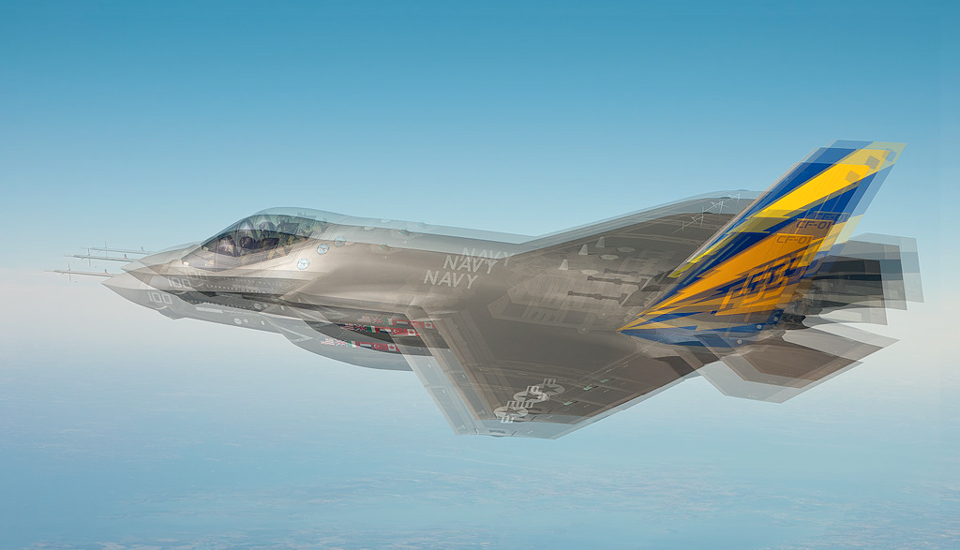By Andrea Shalal-Esa
WASHINGTON (Reuters) - The U.S. government has slashed its estimate for the long-term operating costs of Lockheed Martin Corp F-35 fighter jets by more than 20 percent to under $1 trillion, according to a senior defense official, a move that could boost international support for the program.
異想天開!
The Pentagon has been under pressure for over a year to revise its estimate of maintaining a fleet of more than 2,000 F-35s over 55 years, with industry and military officials arguing that many of the assumptions were outdated and off base.
The new estimate of $857 billion could help ensure the new plane turns out to be as affordable as advertised and comes days after South Korea determined that only a bid by Boeing Co for its F-15 Silent Eagle came in below a $7.4 billion price ceiling for its plan to buy 60 new fighter aircraft.
最聽話的南韓, 得到鷹式戰鬥機 F-15, 不買閃電二號啦!
Lockheed's F-35 and the Eurofighter Typhoon remain in the running, but Boeing's pricing marked a step toward winning the contract, according to sources close to the process. A final decision is expected in mid-September.
It was not immediately clear what impact the lower F-35 operating estimate would have on the South Korean tender, but U.S. officials said Seoul could decide to restart the competition and ask for new bids.
The Pentagon's revision reflects data about the plane's performance based on over 7,000 hours of test flights and revised assumptions about how it will be used and maintained, said the official, who was not authorized to speak publicly.
The estimate was provided to the Senate Armed Services Committee by the Pentagon's F-35 program chief, Air Force Lieutenant General Christopher Bogdan, the official said. A revision had been flagged in June when the Pentagon's acquisition chief said he had expected a review to result in lower operating and maintenance costs.
The F-35 Joint Strike Fighter is the costliest weapons program in U.S. history. The Pentagon estimates it will cost $392 billion to develop and build 2,443 of the new jets for use by the U.S. Air Force, Navy and Marine Corps.
Lockheed is developing three models of the radar-evading warplane for the United States and eight countries that are helping fund its development: Britain, Australia, Canada, Norway, Turkey, Italy, Denmark and the Netherlands.
The revision of the estimate was first reported by Bloomberg news.
REDUCING COSTS
The cost per flying hour of the F-35B model, which can land like a helicopter, is likely be 16.6 percent lower than the earlier Pentagon projections, Lieutenant General Robert Schmidle, deputy Marine Corps commandant for aviation, told Reuters in an interview on Wednesday.
The Marines plan to start using the F-35B for military operations from mid-2015.
A second senior defense official said the current estimate by the Pentagon's Cost Assessment and Program Evaluation (CAPE) office put the cost per flying hour of the F-35B model at over $41,000, but the actual cost would likely be closer to $37,000.
A detailed analysis by the Marine Corps showed this would cut the plane's annual operating costs by nearly $600 million, or $12.3 billion over the next five decades, the official said.
Schmidle said the Marines would fly the planes in short takeoff, vertical landing, or STOVL mode just 10 percent of the time, far less often than the 80 percent rate factored into the initial estimates. The manning levels assumed in the initial estimates were also higher than in practice, he said.
"The Marine Corps has very aggressively stepped out in trying to find ways to decrease the operating and support costs, specifically with regard to the cost per flight hour," Schmidle said. "I wanted to challenge every assumption."
He said he was confident additional savings could be achieved in coming years through efforts by Pratt & Whitney, a unit of United Technologies Corp to lower the cost of operating the airplane's engine, in line with trends seen on other military aircraft programs.
He said the Marines also expected to trim maintenance costs by doing up to 90 percent of the work in house, rather than farming it out to contractors. Similar efforts had resulted in big savings on the V-22, the Marines' tilt-rotor aircraft, he said.
Schmidle said the Marine Corps' analysis forecast $520 million a year in lower maintenance and operating savings once the three other planes it now uses were replaced by the F-35, a process that is currently slated to be completed by 2030.
He said the impact of mandatory Pentagon budget cuts on the F-35 program remained unclear, but said the savings expected by replacing the existing AV8B Harriers, EA-6B Prowler electronic warfare jets and F/A-18 fighters with F-35s could make the case for accelerating that process.
(Editing by Tim Dobbyn and Edwina Gibbs)



 本城市首頁
本城市首頁







































